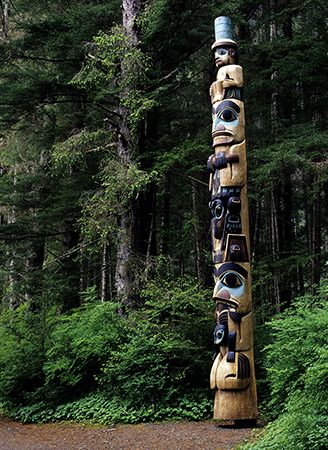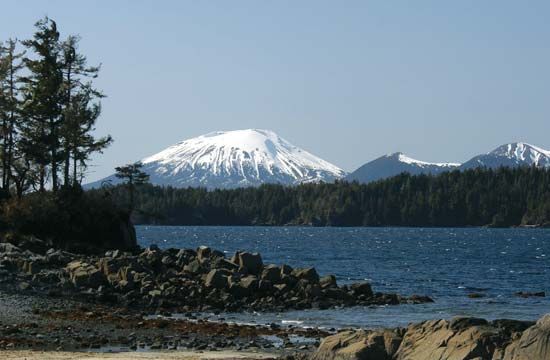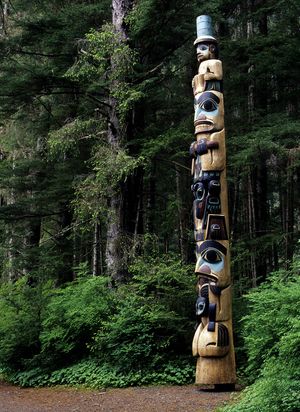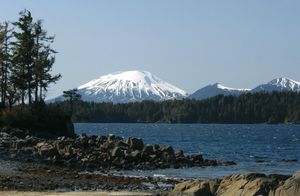Sitka
Our editors will review what you’ve submitted and determine whether to revise the article.
News •
Sitka, city and borough, southeastern Alaska, historically the most notable Alaskan settlement. U.S. Situated 95 miles (150 km) southwest of Juneau, on the western coast of Baranof Island in the Alexander Archipelago, it is the only city in southeastern Alaska that lies on the Pacific Ocean.
The area was originally inhabited by Tlingit Indians. It was explored by a Russian expedition in 1741, and Old Sitka, or Fort St. Michael, was established in July 1799 by Aleksandr Baranov (Baranof), the first Russian governor of Alaska. The fort was destroyed by the Tlingit in 1802. The present city was founded as Novo Arkhangelsk (“New Archangel”) in 1804, when Baranov moved the headquarters of the Russian-American Company (a Russian trading company) there from Kodiak. After 1867 the settlement was commonly known as Sitka (derived from a Tlingit phrase meaning “on the outside of Shee [Baranof Island]”). The formal transfer of Alaska from Russia to the United States took place there on October 18, 1867, and Sitka served as the territorial capital until 1906, when the seat of government was moved to Juneau. The U.S. government built a naval air base there during World War II, which swelled the population to nearly 40,000. The base is now operated by the U.S. Coast Guard.
Sitka’s principal economic activities are fishing, canning, lumbering, and tourism. The city is also a regional health-care center. St. Michael’s Cathedral (Russian Orthodox, 1848) was the first Russian church built in North America; it was rebuilt after a fire destroyed it in 1966. Sheldon Jackson College (1878) has a museum housing the state’s oldest and one of the best collections of native artifacts and Russian mementos. Sitka is also the site of a campus of the University of Alaska Southeast. WhaleFest (established 1995), held annually in November, celebrates the migration of humpback whales through Sitka Sound. A popular tourist destination is the city’s raptor rehabilitation center. Sitka lies in Tongass National Forest. Nearby is Sitka National Historical Park, the site of a pivotal battle between Russians and Tlingit Indians in 1804; it also contains the Russian Bishop’s House, trails, and totem poles. Mount Edgecumbe (3,201 feet [976 meters]), a dormant volcano on Kruzof Island, is a conspicuous landmark in Sitka’s island-studded, mountain-locked harbor. Inc. 1913. Pop. (2000) 8,835; (2010) 8,881.






















